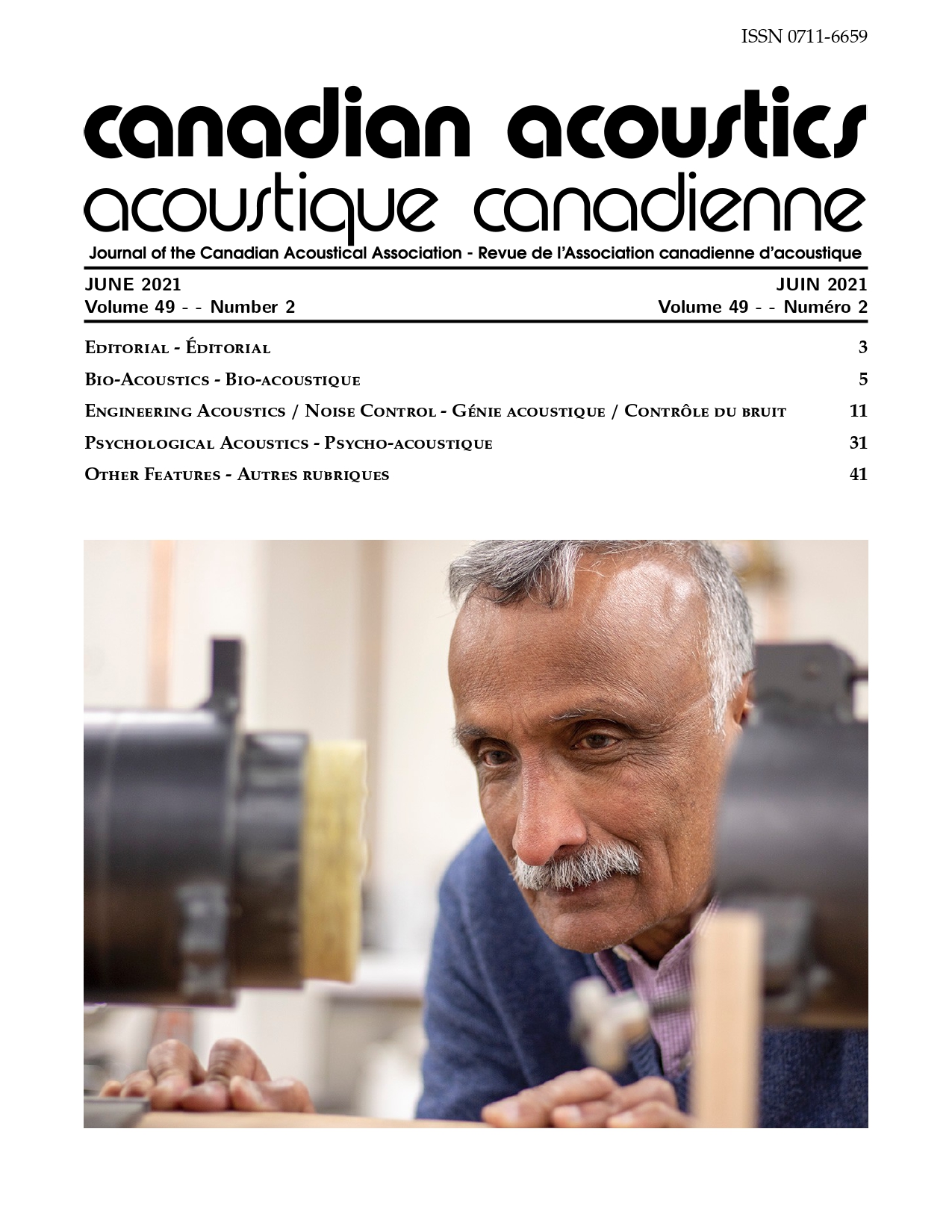Influence Of Different Distribution Patterns Of Holes On Single Micro-Perforated Panel Sound Absorption Behaviour
Keywords:
Micro-Perforated Panel Absorber, Distribution Pattern, Hole Geometry, Maa Model.Abstract
Micro-perforated panels have become a valid broadband sound absorber option lately. Their applicability is wide since they are promising for absorbing sound energy for several applications, such as automotive, HVAC systems, noise barriers, etc. This study investigates the effect of different distribution patterns of holes, perforation ratio, air gap depth, and the hole geometry on single micro-perforated panels' sound absorption behavior. Four different distribution patterns (Circle, Square, Triangle, and Random) of orifices are designed and fabricated on a surface of metal sheet of thickness 1 mm with hole diameter 1mm, and air gap depth between the panel and the back wall 100 mm. Each distribution pattern of the four different patterns was perforated with seven perforation ratios (0.12%, 0.36%, 0.48%, 0.60%, 0.84%, 1.1%, and 1.9%).The measurements were carried out using the two-microphone impedance tube in the low-frequency range from 100 Hz to 1000 Hz. Although the results revealed no significant difference between the absorption coefficients of different holes' patterns at all the perforation ratios, the random pattern is slightly higher than other distribution patterns. Increasing the air gap depth improved the average sound absorption coefficient in the frequency range from 160 Hz to 630 Hz from 0.29 to 0.51. Moreover, Changing the hole geometry from circle to square and triangle enhanced the sound absorption coefficient of about 11 % and 12 %. Good consistency between the theoretical calculations and the experimental results is obtained.
Additional Files
Published
How to Cite
Issue
Section
License
Author Licensing Addendum
This Licensing Addendum ("Addendum") is entered into between the undersigned Author(s) and Canadian Acoustics journal published by the Canadian Acoustical Association (hereinafter referred to as the "Publisher"). The Author(s) and the Publisher agree as follows:
-
Retained Rights: The Author(s) retain(s) the following rights:
- The right to reproduce, distribute, and publicly display the Work on the Author's personal website or the website of the Author's institution.
- The right to use the Work in the Author's teaching activities and presentations.
- The right to include the Work in a compilation for the Author's personal use, not for sale.
-
Grant of License: The Author(s) grant(s) to the Publisher a worldwide exclusive license to publish, reproduce, distribute, and display the Work in Canadian Acoustics and any other formats and media deemed appropriate by the Publisher.
-
Attribution: The Publisher agrees to include proper attribution to the Author(s) in all publications and reproductions of the Work.
-
No Conflict: This Addendum is intended to be in harmony with, and not in conflict with, the terms and conditions of the original agreement entered into between the Author(s) and the Publisher.
-
Copyright Clause: Copyright on articles is held by the Author(s). The corresponding Author has the right to grant on behalf of all Authors and does grant on behalf of all Authors, a worldwide exclusive license to the Publisher and its licensees in perpetuity, in all forms, formats, and media (whether known now or created in the future), including but not limited to the rights to publish, reproduce, distribute, display, store, translate, create adaptations, reprints, include within collections, and create summaries, extracts, and/or abstracts of the Contribution.


